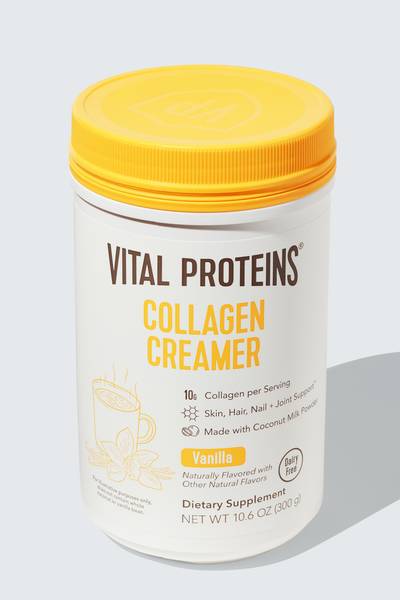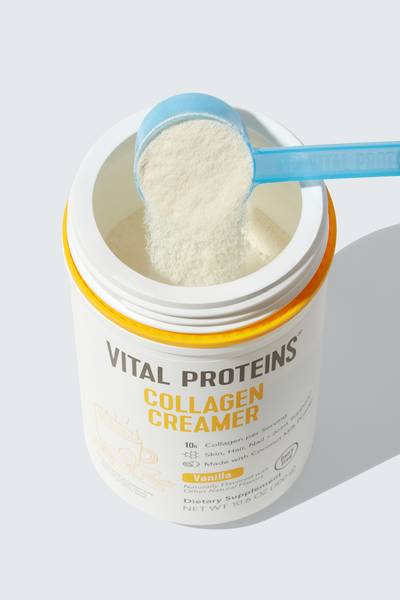Erin Tucker (@bionic_erinon Instagram) is an Atlanta-based fitness instructor. Here, she chronicles her hip replacement surgery recovery.
In my mind, the term "hip replacement" conjures up an image of a Baby Boomer keeping up with the grandkids — not a 26-year-old woman beginning her professional career in the fitness industry.
When I was told I needed a hip replacement, I was shocked. I had been in the fitness industry for almost 10 years, played sports all through high school, and even went on to play college soccer. Getting a joint replacement in my 20s wasn’t exactly how I pictured my life going.
Identifying a Problem
While in college, I grew to love fitness and began teaching classes at the campus wellness center. I was extremely active and cross-trained all throughout the year. In 2011, I was in the midst of my senior year of college when I began experiencing extreme hip pain. I shrugged it off and continued to work out daily, thinking I just needed to "add more stretching" to my routine. Little did I know, I was running with a hip impingement along with several labral tears and hip surgery recovery would be in my near future. About six months later, I couldn’t tolerate the discomfort anymore. I was 21 years old at the time and was waking up in the middle of night from the pain. I was also unable to walk for more than 10 minutes without dragging my leg behind me. My limp caused nearly every person to ask if I was okay, and eventually I had to stop teaching my classes. What was wrong with me?!

Getting to the Bottom of the Issue
When I finally sought medical advice, I discovered that I had a congenital abnormality that caused bone-on-bone contact at my hip socket. In 2012, I had an arthroscopic surgery to relieve some pain and buy me some time before a doctor was willing to perform a total joint replacement on me.
Fast forward 5 years and I had developed an even more profound limp and had very limited hip mobility. I only had 8 degrees of internal rotation (the normal amount is 35-45 degrees) and was still in extreme pain. It was time for a total hip replacement.
I had now suffered from chronic hip pain for nearly 7 years and agreed to undergo the surgery with hopes of finally being pain free and without a limp. As you can see frommy recovery video, I made amazing progress, worked hard on my recovery, and was doing all of my physical therapy exercises.
However, my pain-free life was short-lived, and thesamepain crept back less than four months post-op of my total hip replacement. How could this be?
Related Articles
Back to the Drawing Board
I was beginning to limp again and would occasionally get sent home from work. I went to several sports medicine doctors, got cortisone injections, underwent weekly dry needling (ouch!), and was even evaluated for a leg-length discrepancy. I scheduled an emergency appointment with my surgeon who couldn’t seem to give me an answer of why I was having such a difficult recovery. I didn’t know what to do and began questioning if this limp and pain was something I was going to have to live with forever. I seemed to be out of options and was feeling hopeless.
Managing the Stress
In an effort to manage my pain, I took a significant amount of time off from all physical activity, which impacted my mind and body. I was now one year post-op and my insurance denied me to attend further physical therapy sessions due to a “lack of progress.” I was frustrated beyond measure. My physical therapists had alluded that the pain and limp may have been from a weak gluteus medius that I wasn’t firing, so I decided to go completely back to square one and only train that muscle. With my wedding around the corner, my stress levels and overthinking increased greatly. “What if I’m limping down the aisle?” “What if I can’t dance at my own wedding?” I tried not to think about it and continued to activate my gluteus medius with small movements, hoping it would pay off in the long run.

A Glimmer of Hope
Out of options and exhausted from doctor shopping, I started researching joint supplements on my own and was referred to Vital Proteins® by a close friend. I began adding Vital Proteins Collagen Creamer® to my coffee and shakes every day. I continued doing my physical therapy exercises, which consisted of taking collagen in the morning, followed by doing a 15-minute resistance band sequence. Over the course of the next several weeks, the throbbing in my hip began to fade and there were even days when I didn’t think about my hip at ALL. It was amazing. Even though I was “back to basics” with my movements, my joints were feeling amazing and I was getting stronger every day! Weeks turned into months and I am so grateful to say that I have now been nearly 8 months completely pain-free.
My A-Ha Moment
Early in my recovery I was certain I was “doing my PT exercises,” but in the end, I learned that I was using thewrongmuscles to do the work … I was just bulldogging through my movements thinking I was making great progress when in reality, I was setting my recovery back by neglecting the muscle groups I really needed. As someone who works in the fitness industry, this was such a powerful moment for me (and a total wakeup call). For many of us who enjoy working out, the easiest part about working out (believe it or not) is just grinding through your routine and getting the job done. However, I have learned the hard way that that’s not what health and fitness is about. Yes, working hard is great, but it’s about using the correct muscles to do the work you intend to do. If you’re doing a squat and you feel pain in your knees you may not be using the right muscles to do the work. My advice to anyone is to have someone watch you perform your movements. If you are unsure about your form or have any doubts, get a second set of eyes to assist you! Activating the right muscles has been life-changing and I am so grateful to share my recovery story.
Photos: Courtesy of Erin Tucker















